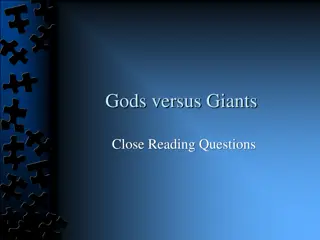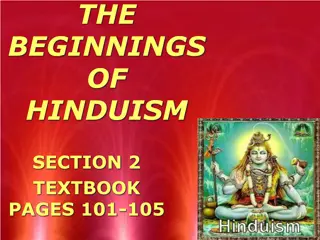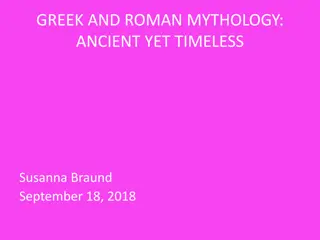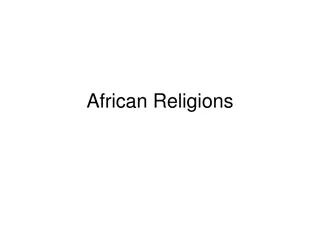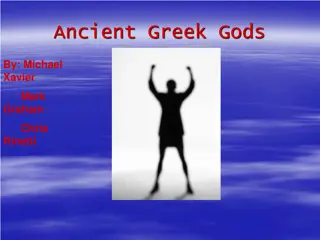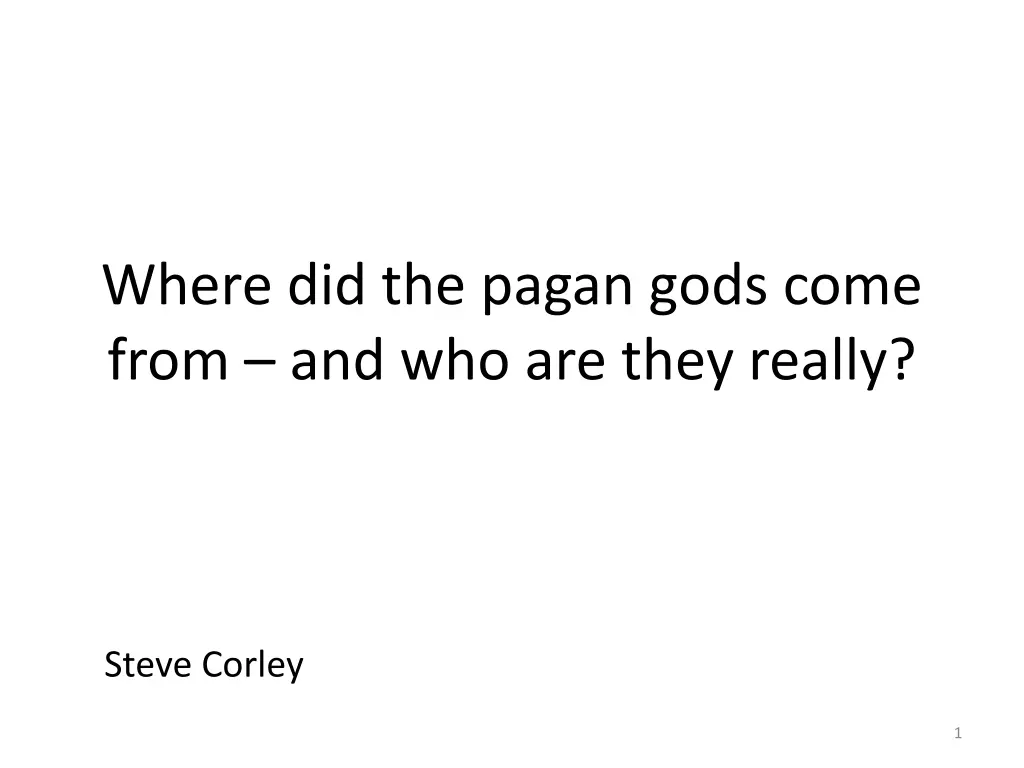
Origins and Deification in Pagan Gods Revealed
Explore the origins and symbolism behind pagan gods such as wiatowid, Janus, Tubal-cain, Vulcan, Seba, and Raamah, revealing how prominent figures or ancestors were deified across different cultures. Unravel the connections between Roman, Germanic, and Hindu mythologies and the naming of deities in this enlightening journey of understanding and interpretation.
Download Presentation

Please find below an Image/Link to download the presentation.
The content on the website is provided AS IS for your information and personal use only. It may not be sold, licensed, or shared on other websites without obtaining consent from the author. If you encounter any issues during the download, it is possible that the publisher has removed the file from their server.
You are allowed to download the files provided on this website for personal or commercial use, subject to the condition that they are used lawfully. All files are the property of their respective owners.
The content on the website is provided AS IS for your information and personal use only. It may not be sold, licensed, or shared on other websites without obtaining consent from the author.
E N D
Presentation Transcript
Where did the pagan gods come from and who are they really? Steve Corley 1
Creating a pagan god from the appearance of a cherub? Cherubim appeared to Ezekiel with four faces (Ezekiel 10:14, 21) and full of eyes all around (verse 12) A pagan Slavic deity, wiatowid (or Svetovit) was imagined as having four faces (one in each direction) Name may mean world view, view of light, splendid view or holy view The Roman god Janus was imagined with two faces, front and back (origin of name of month January ) Remember that Satan was a cherub (Ezekiel 28:14) and has a tremendous desire to be worshiped! (Matt. 4:9) 2
Example of deification of ancestor or other prominent person Tubal-cain (Gen. 4:22) Can be pronounced Tuval-cain Instructor of every craftsman in bronze and iron 3
Example of deification of ancestor or other prominent person Tubal-cain (Gen. 4:22) Can be pronounced Tuval-cain Instructor of every craftsman in bronze and iron Roman god of the forge was named Vulcan In Germanic mythology the master blacksmith was named Wieland or Wayland, with one of the names of Odin being V lundr r mu ( smith of battle ) 4
Another example of deification of ancestor or other prominent person Seba and Raamah, sons of Cush (Gen. 10:7) 5
Another example of deification of ancestor or other prominent person Seba (can be pronounced Seva) and Raamah, sons of Cush (Gen. 10:7) One of the major strains of Cushites migrated to India (possibly gave name to Hindu Kush mountains) The Hindu god of destruction is named Shiva Rama is the name of a figure in Hinduism sometimes regarded as a god, sometimes as a human hero 6
Applying the name of the True God to a pagan god The chief god of the Roman pantheon was named Jupiter ( Juppiter or Iuppiter in Latin) How does the name Juppiter have a connection with the name of the True God? It is not yet obvious because we have not looked at how the form of the name changes in Latin with its use in a sentence! (Latin declension) 7
What happens to the Latin name Juppiter in cases other than the nominative? Juppiter is a third declension Latin noun: Latin case Form of name Nominative (subject) Genitive (possessive) Juppiter Jovis Dative (indirect object) Jovi Accusative (direct object) Ablative (miscellaneous uses) Jovem Jove In cases other than the nominative the relationship to the Hebrew name of the True God (YHWH) becomes obvious! 8
Applying the name of the True God to a pagan god another example One of the pagan gods of the Canaanites was called El (identified as father of the various Baals) (singular form of the Hebrew name Elohim of the True God; the Hebrew expression for God Almighty is El Shaddai and the Hebrew for God Most High is El Elyon ) 9
Applying the name of the True God to a pagan god a third example One of the pagan gods of the Greeks (a fertility god, said to die and rise at definite times each year) was called Adonis (= Tammuz, Ezekiel 8:14) (similar to the Biblical Hebrew names Adonai or Adon for the True God) 10
Total paganization of a title originally applied to the True God Hebrew word ba al (Strong s 1167) originally meant master or owner (cf. Ex. 22:8, Judges 19:22) and was a title which at one time was appropriately used for the True God Designation (by nations surrounding Israel) of their pagan gods as Baals or masters became so widespread that the title Baali or my Master became no longer appropriate to use in referring to the True God (Hosea 2:16) 11

